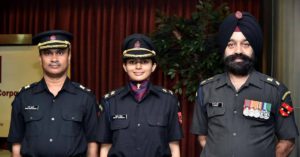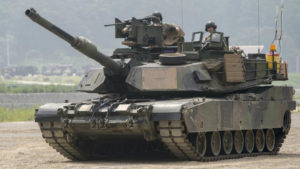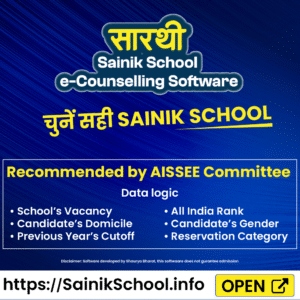Medical Examination – Final Step of Admission Procedure
The All India Sainik School Entrance Examination (AISSEE) 2024 was held on 28 January 2024. After the written test, the sequence of steps is – Declaration of provisional answer key, challenge of answer key, declaration of the final result and release of the scorecard, registration for E-Counselling, allotment of Sainik School, reporting at the allotted Sainik School for medical and document verification. This post throws light on all aspects of the Sainik School medical test for AISSEE 2024 and points to take care of during the medical test.
All candidates seeking admission to the Sainik School need to undergo Sainik School medical test by a Board consisting of military/civil doctors. The standard of health and medical fitness is the same as that for the NDA Examination. Keeping in mind the tender age of the boys, however, no standards of height, weight, and chest measurement are applicable at the time of admission. The decision of the Medical Board conducting the Sainik School medical test is final and binding, except in a case where representation is made to the Principal. For more details about the Sainik School entrance exam log on to https://exams.nta.ac.in/AISSEE/
Sainik School Medical Test
1. VISION STANDARDS
Better Eye Worse Eye
(a) Distant vision V-6/6 V-6/9
(b) Near Vision CPI (MLT) Correctable to 6/6
2. COLOUR PERCEPTION :
CP-3 (Defective safe) candidate should be able to recognize the white signal, red signal, and green signal colors correctly as shown by Martin’s Lantern at a distance of 15 meters, or read the requisite plates or Ishihara Book/Tokyo Medical College Book.
3. Fundus and Media should be healthy and within normal limits.
4. No undue degenerative sign of Vitreous or Chorieretina should be present suggesting Progressive Myoretina.
5. Must possess good binocular vision (fusion Faculty and full field of vision in both eyes).
6. There should be no organic disease likely to cause exacerbations of deterioration.
7. There should be no squint or morbid condition of the eye or the lids which is liable to risk of aggravation or recurrence. 8. There should be no active trachoma or its complications.
8. There should be no active trachoma or its complications.
3. DENTAL
9. Dental checkup ensures that the cadet has sound teeth for efficient mastication as given below:-
a) A candidate must have a minimum of 14 dental points to be acceptable. To assess the dental condition of an individual, points are allotted as under for teeth, in good apposition with corresponding teeth in the other form.
(i) Central incisor, lateral incisor, canine, 1st and 2nd premolar and underdeveloped 3rd molar-1 point each.
(ii) 1st and 2nd molar and fully developed 3rd molar- 2 points each. When all 32 teeth are present, there will be a total count of 22 points.
10. The following teeth in good functional apposition must be present in jaw:-
(a) Any four of the six anteriors
(b) Any six of the ten posteriors
11. Candidates suffering from severe Pyorrhoea are rejected. Where the state of Pyorrohea is that in the opinion of the dental officer, it can be cured without extraction of teeth, the candidate may be accepted.
ENT
12. There should be no impediment of speech. The speech test is used to check the hearing. Wherever required, audiometric records will also be taken.
(a) Speech Test. The candidate should be able to hear a forced whisper with each ear separately at a distance of 610 cm.
(b) Audiometric Record. The candidate should have no loss of hearing in either ear at Frequencies 128 to 4,095 cycles per second (Audiometry reading between 10 and +10 )
13. There should be no impaired hearing, discharge from the tympanic membrane, a sign of acute or chronic disease of either ear, unhealed perforation of the suppurative otitis media, or evidence of radical or mastoid operation. A soundly healed perforation without any impairment of the drum and without impairment of hearing will not be a bar to the acceptance of a candidate.
14. There should be no disease of the bones or cartilages of the nose or nasal polypus or disease of the nasopharynx and accessory sinuses. A small asymptomatic traumatic perforation of the nasal septum will not be a cause for rejection.
15. There should be no enlarged glands due to tuberculosis or the disease in the neck and other parts of the body and the thyroid gland should be normal. Scars of operation for the removal of the tuberculosis gland will not be a cause for rejection provided there has been no active disease within the preceding five years and the chest is clinically and radiologically clear.
16. There should be no disease of the throat, palate, tonsil or gums or any disease or injury affecting the normal function of either mandibular joints. Simple hypertrophy of the tonsils, if there is no history of attacks of tonsillitis, will not be a cause for rejection.
SURGICAL
17. There should be no evidence of a weak constitution, imperfect development, serious malformation, or obesity.
18. There should be no maldevelopment or impairment of the function of the bones of joints and no cervical rib detectable on physical examination.
19. A candidate with a rudimentary cervical rib detected incidentally only on the skiagram of the chest when this is done, and in whom there are no signs or symptoms referable to the cervical rib may be considered fit and a note to this effect is to be recorded by the medical officer in the medical board proceedings.
20. There should be no malformation of the head, deformity from fracture, or depression of the bones of the skull.
21. There should be no sign of functional or organic disease of the heart and blood vessels.
22. There should be no evidence of pulmonary tuberculosis or previous history of this disease or any other chronic disease of the lungs.
23. There should be no evidence of any disease of the digestive system including any abnormality of the liver and spleen.
24. Inguinal hernia (unoperated ) will be a cause for rejection. Candidates who have been operated for hernia may be declared fit provided:-
(a) One year has lapsed since the operation, documentary proof is to be furnished by the candidate.
(b) General tone of the abdominal muscles is good. (c) There has been no recurrence of the hernia or complication connected with the operation.
25. There is no hydrocele, or definite varicocele, or any other disease or defect of the genital organs. A candidate who has been operated for a hydrocele will be accepted if there are no abnormalities of the cord and testicle and there is no evidence of filariasis. The undescended intra-abdominal testicle on one side will not be a bar to acceptance of candidates provided the other testicle is normal and there is no untoward physical or psychological effect due to the undescended testicle. Undescended testis retained in the inguinal canal or at the external abdominal ring is, however, a bar to acceptance unless corrected by operation.
26. There should be no fustupia and fissure of the anus, or evidence of hemorrhoids.
27. There should be no disease of the kidneys. All cases of Glycosuria and Albuminuria will be rejected.
28. There should be no disease of the skin unless temporary or trivial, scars which by their extent or position cause or are likely to cause disability or marked disfigurement will be a cause for rejection.
29. There should be no active, latent, or congenital venereal disease.
30. There should be no history or evidence of mental disease. Candidates suffering from epilepsy, incontinence of urine, or enuresis will not be accepted.
31. FLAT FOOT
(a) METHOD OF EXAMINATION
(i) The candidate will be examined bare-footed, standing erect and the presence or absence of a normal arch of the feet should be noted.
(ii) Candidate will be asked to stand on toes with the feet and heels kept separated and the restoration or otherwise or arch noted.
(iii) Candidate will be made to skip on forefoot and the suppleness and springness of the feet observed. Tarsal joints will be examined for suppleness of movements.
(b) ACCEPTABLE FOR ADMISSION
(i) A milder degree of the flat foot where the arches of the feet are restored on standing on toes, with supple or painless feet will not be a bar to acceptance.
(ii) A severe degree of the flat foot where the arch does not reappear on standing on toes and where the feet are rigid will be a cause for rejection.
(iii) Rigidity of the foot whatever the shape of the feet will cause rejection.
32. KNOCK KNEE
(a) METHOD OF EXAMINATION
(i) The candidate will be examined standing erect.
(ii) The knee joints will be kept fully extended with the feet parallel and the patellae facing directly forward.
(iii) The distance between the medial malleoni will be measured with the medial
(iv) Any associated deformity of the feet or hip or genu recurvatum will be observed at the same time.
(b) ACCEPTABLE FOR ADMISSION
(i) A milder degree of knock knee when the distance between the malleoli is not more than two inches will not be a bar to acceptance, provided there is no other associated disability. This will be considered as a minor disability and recorded as such. The candidate should be able to stand to attention with shoes or boots without flexing or overlapping of either knee.
(ii) Marked degree of knock knee with a distance between the malleoli more than two inches will be unfit for acceptance.
(iii) If a candidate can stand to attention without flexion of the knee irrespective of any inter-malleolar measurements, he shall be declared fit.
GENERAL
33. In addition to the above, the parents will be well served to administer vaccinations to their ward for ailments like Jaundice, Chicken Pox, etc, and institute other preventive measures for their ward to avoid being rendered sick/unfit for long durations to continue regular schooling and losing valuable attendance.
Note:- Remedial operations may be performed before entry. However, there is no guarantee for ultimate acceptance and the candidates must clearly understand that the decision of whether an operation is desirable or necessary is one to be made by their private medical advisor. The school will accept no liability regarding the result of the operation and expenses incurred.
Procedures Involved in the Sainik School Medical Test
The Sainik School medical test is conducted by a team of qualified medical professionals, including doctors and nurses. The test typically includes the following procedures:
- Physical Examination: The first part of the medical test involves a thorough physical examination. This includes measuring height, weight, and other vital statistics, as well as checking for any abnormalities or deformities.
- Vision Test: The next part of the medical test is a vision test. The purpose of a vision test is to ensure that students have good eyesight, which is essential for many activities, including shooting and navigation.
- Hearing Test: The purpose of the hearing test is to ensure that students have good hearing. This is essential for communication and for detecting potential threats.
- Dental Examination: A dental examination is done to check for any issues with teeth or gums. Dental health is essential for overall health and well-being.
- Medical History: The medical team will also ask about the student’s medical history, including any past illnesses, surgeries, or allergies. This information is crucial in determining whether a student is fit to undergo the rigorous training required at a Sainik School.
- Blood and Urine Tests: Blood and urine tests are done to check for any underlying health issues or infections.
How to crack the AISSEE 2025 examination?
The NTA will conduct the AISSEE 2025 exam in January 2025. The ideal time to start preparation is one year before the exam so that students get a full year to prepare and polish themselves. The Sainik School Entrance Exam is a tough nut to crack. The standards and competition are way higher than one could think. Getting admission into Sainik School is the dream of thousands of young boys and girls. However, only a few can turn this dream into reality.
To succeed in this competitive environment, candidates need to prepare thoroughly, maintain a disciplined study routine, and focus on developing a strong foundation in the relevant subjects. Regular practice, solving sample papers, and mock tests can help in building confidence and improving performance. Maintaining physical fitness and participating in extracurricular activities can enhance overall candidacy.
It is important to remember that the competition is tough. However, dedication, hard work, and a positive mindset can significantly increase your chances of securing admission to a Sainik School. Here, Shaurya Bharat can be a perfect guide to students. Shaurya Bharat is the best offline and online platform for students preparing for the Sainik School entrance examination.
Offline Classes
We conduct offline classes (School + Coaching) at our campus in Jodhpur, Rajasthan. Click the following link to get a virtual tour of Shaurya Bharat Sainik School and Defence Academy. https://www.youtube.com/watch?v=H1dDOpZ-kh8
Online Classes
Online classes are conducted through the Shaurya Bharat app. The Shaurya Bharat app provides the best content in the form of live classes, video lectures, and e-books.
Also, it offers topic-wise practice tests and pattern-based live exams. The live exams are based exactly on the pattern of the main examination. This gives students a well-required practice and a look and feel of the main examination. It makes them well-equipped to handle the examination pressure and overcome it with minimum ease.
Useful Links
To learn more about the Shaurya Bharat app logon to https://shauryabharat.com/
For more information about the Sainik School entrance exam for class 6, log on to https://shauryabharat.com/elite-schools/aissee-sainik-school-class-6/
For more information about the Sainik School entrance exam for class 9, log on to https://shauryabharat.com/elite-schools/aissee-sainik-school-class-9/
To download the detailed notification, submit the online application and download the admit card log on to https://exams.nta.ac.in/AISSEE/
For the best Preparation for Sainik School 2025 Download the Shaurya Bharat app. Or use the Shaurya Bharat Web App.







